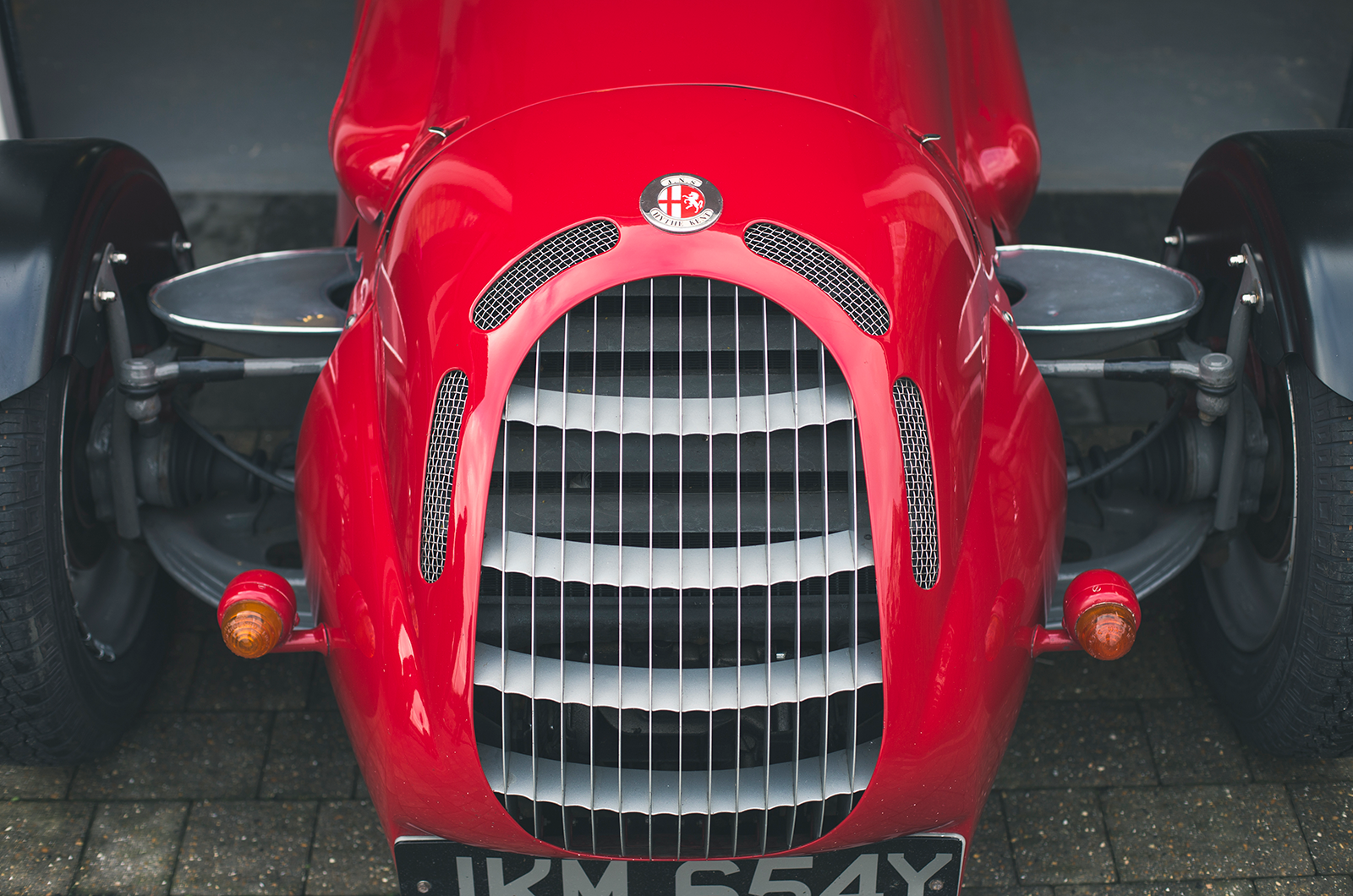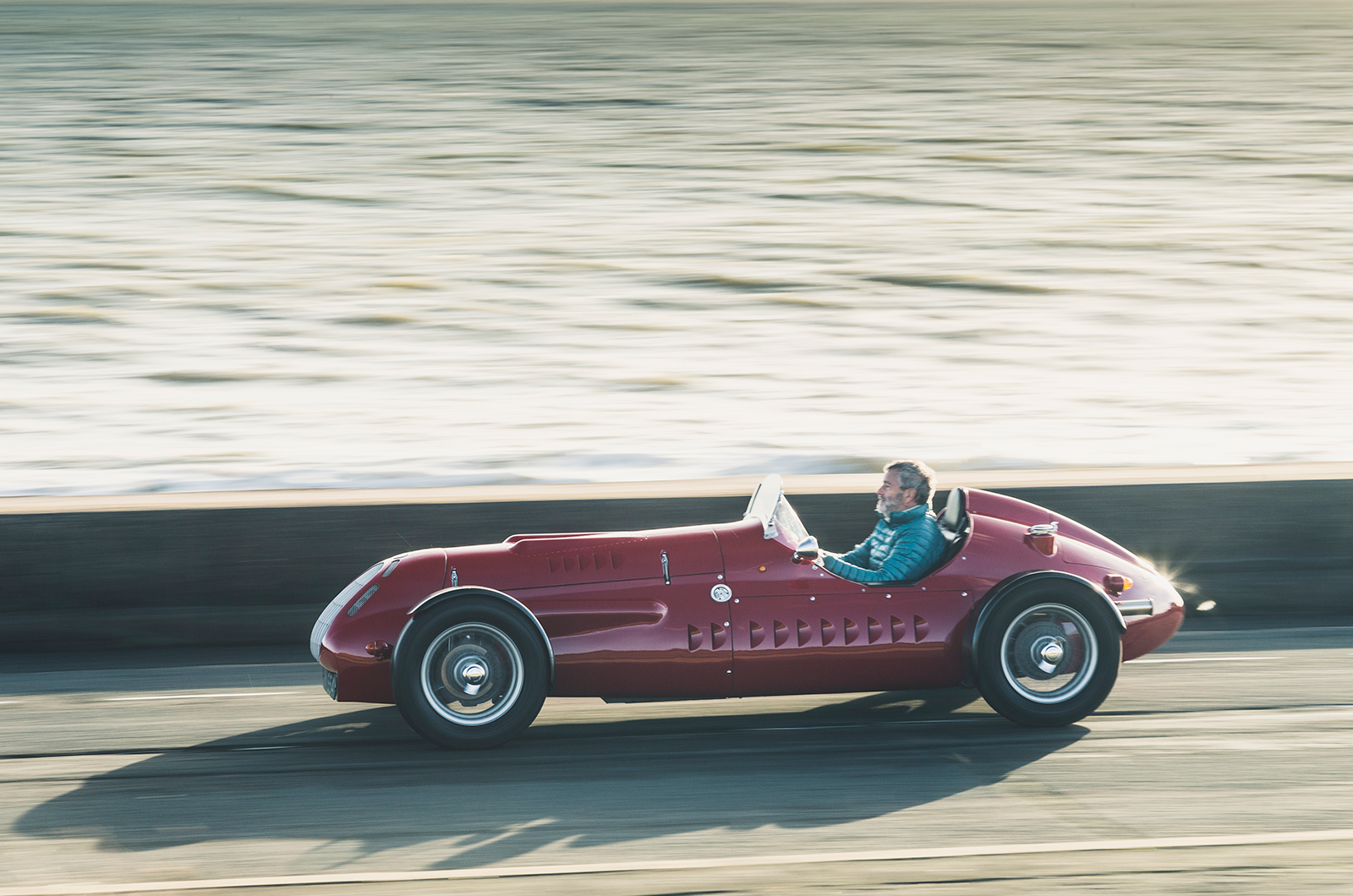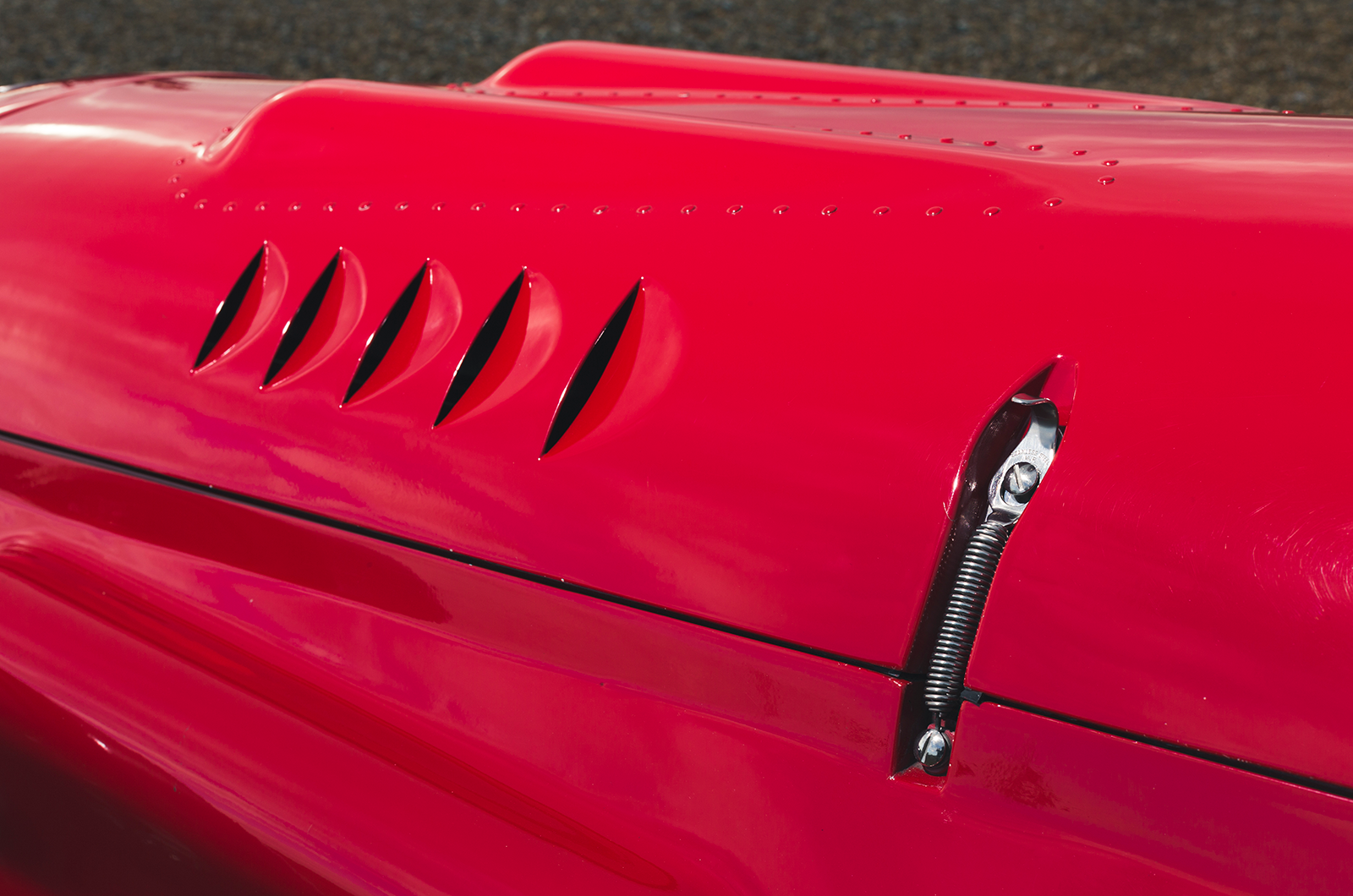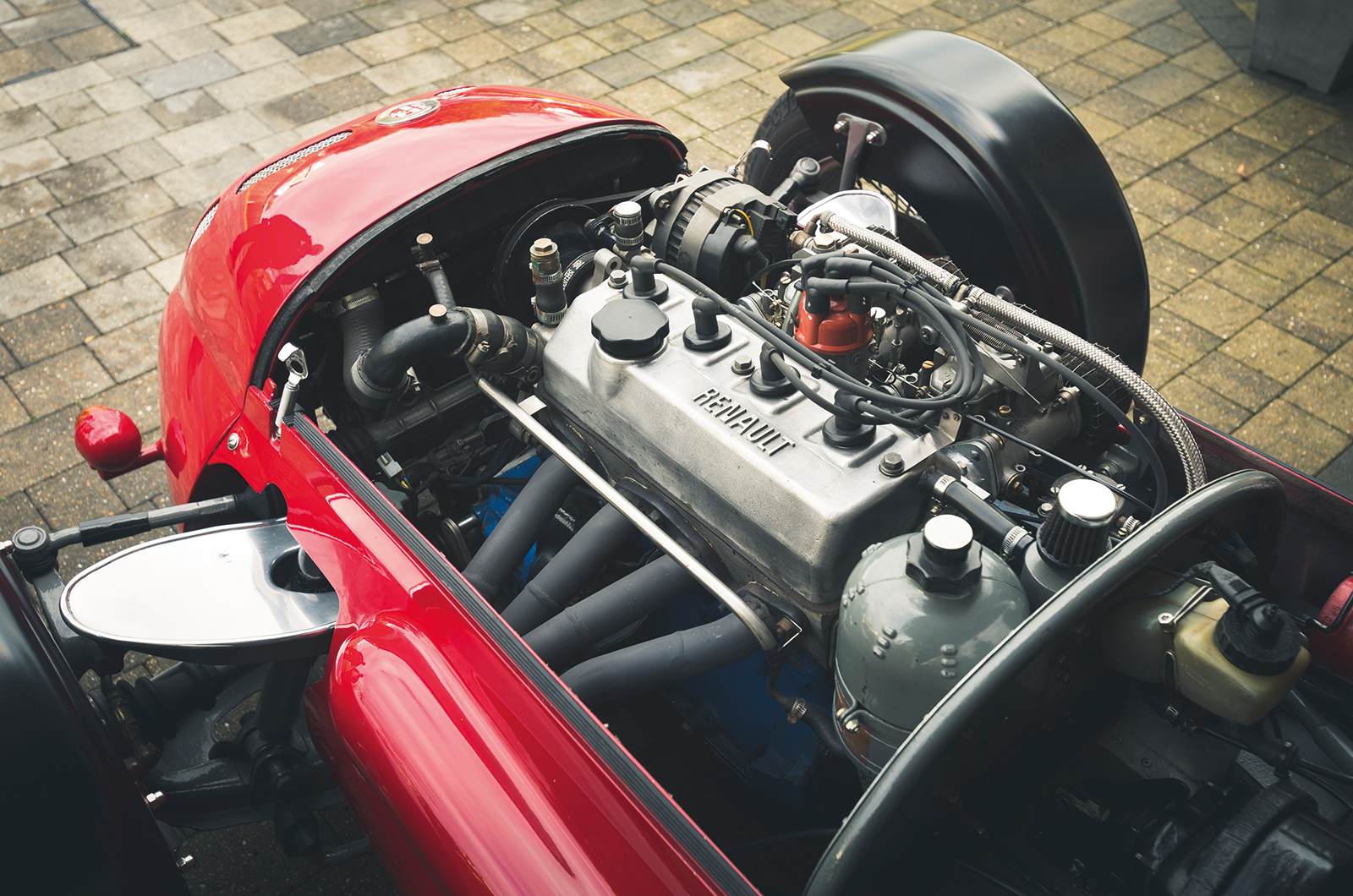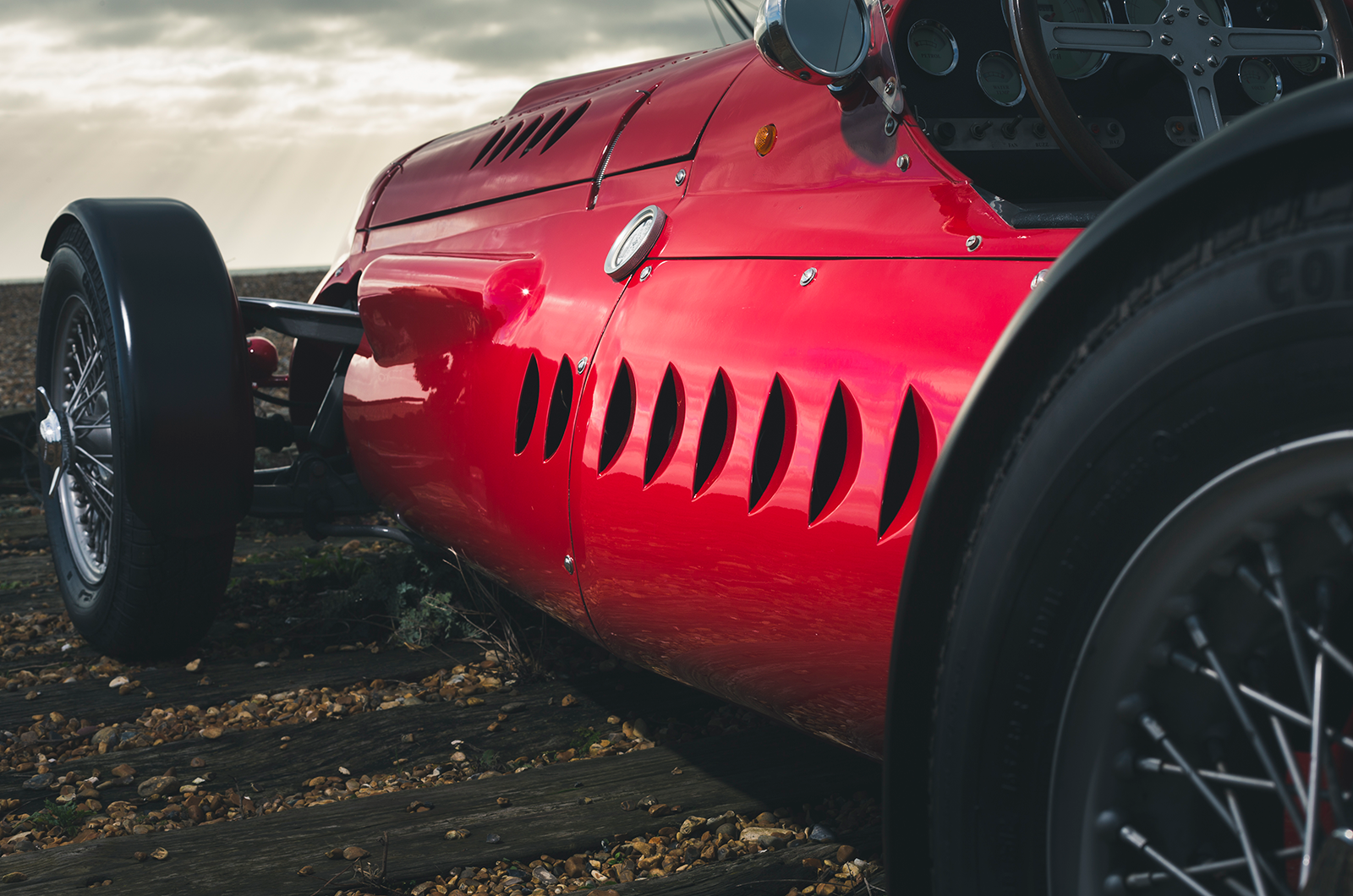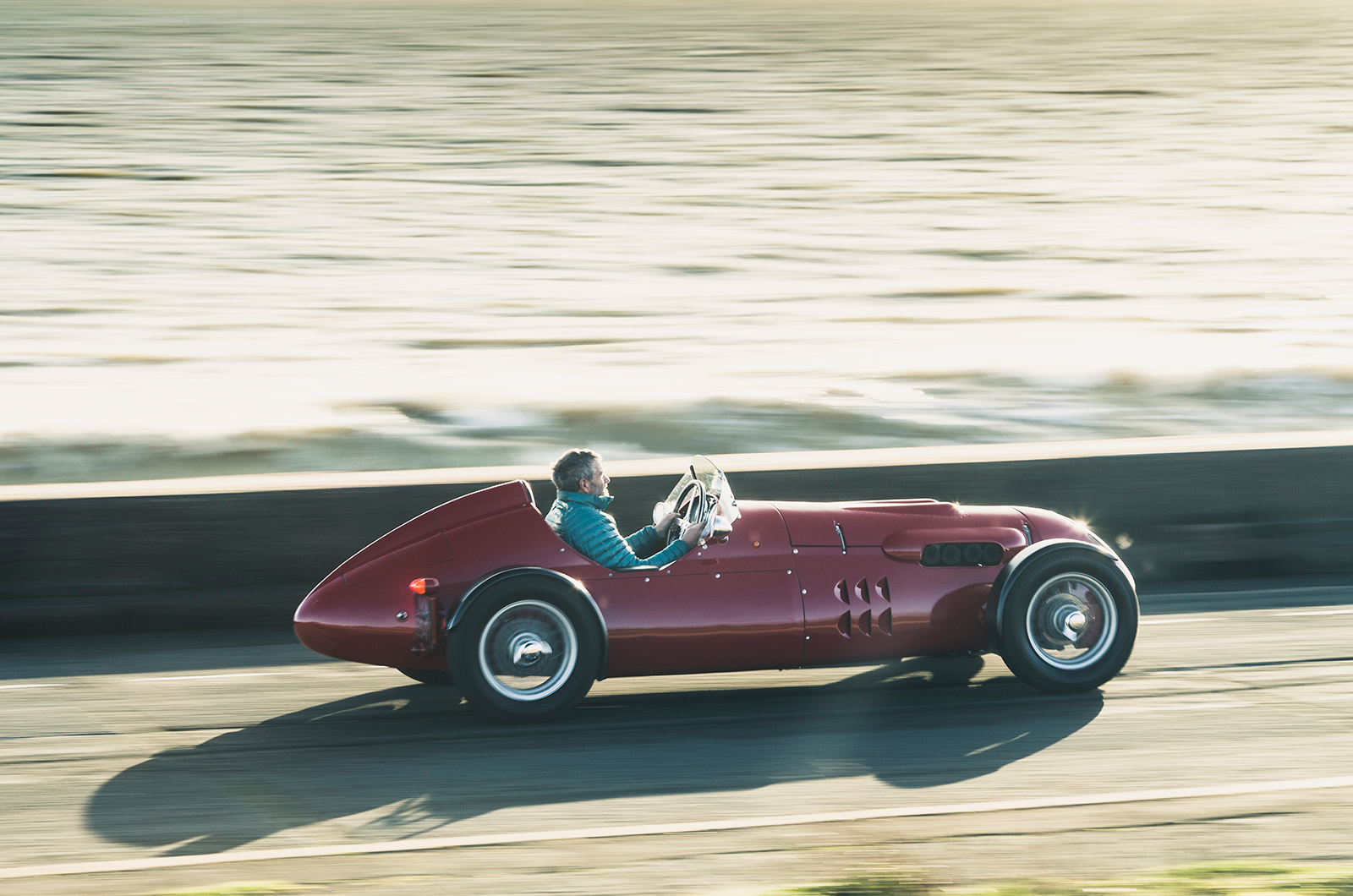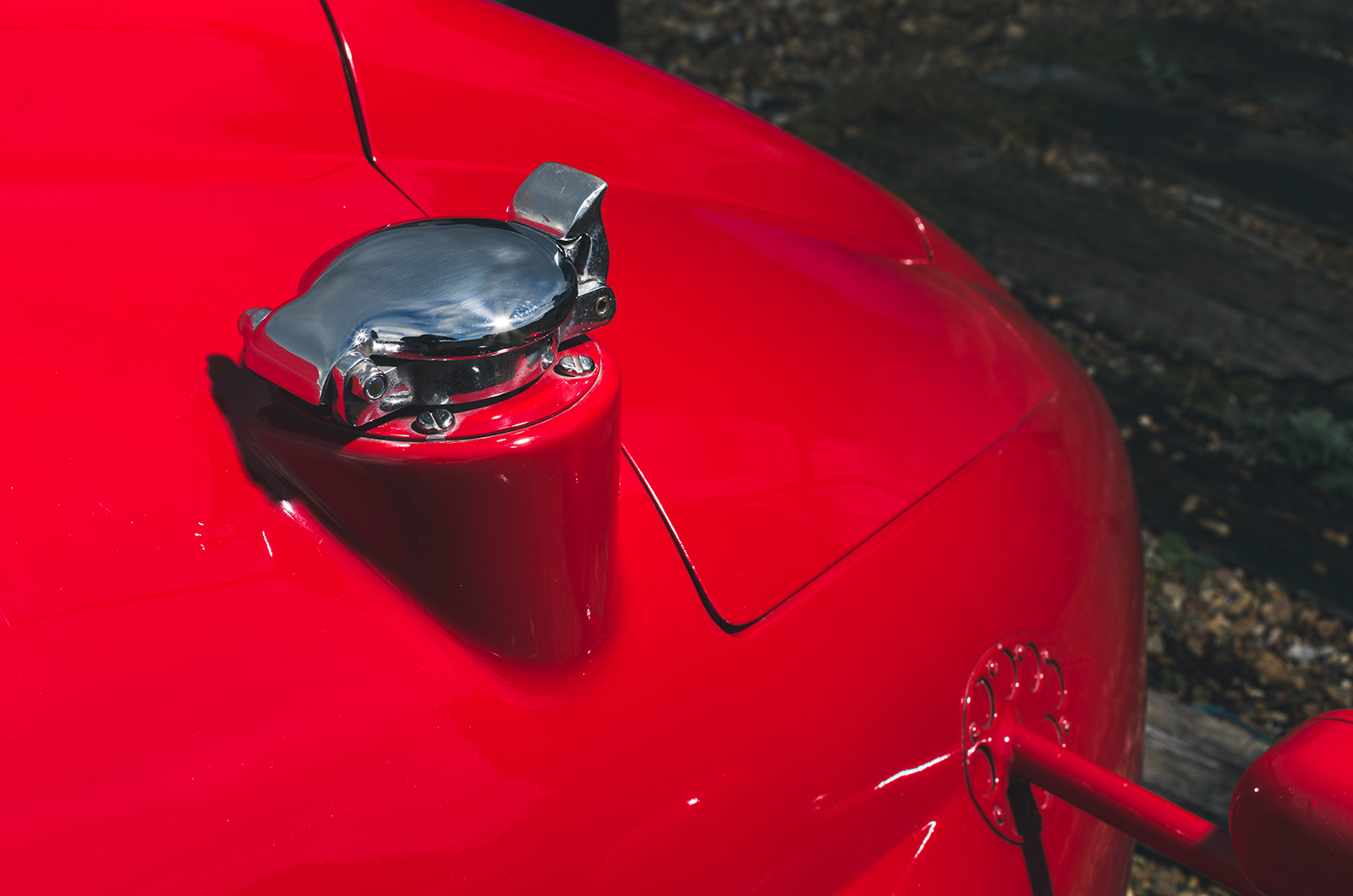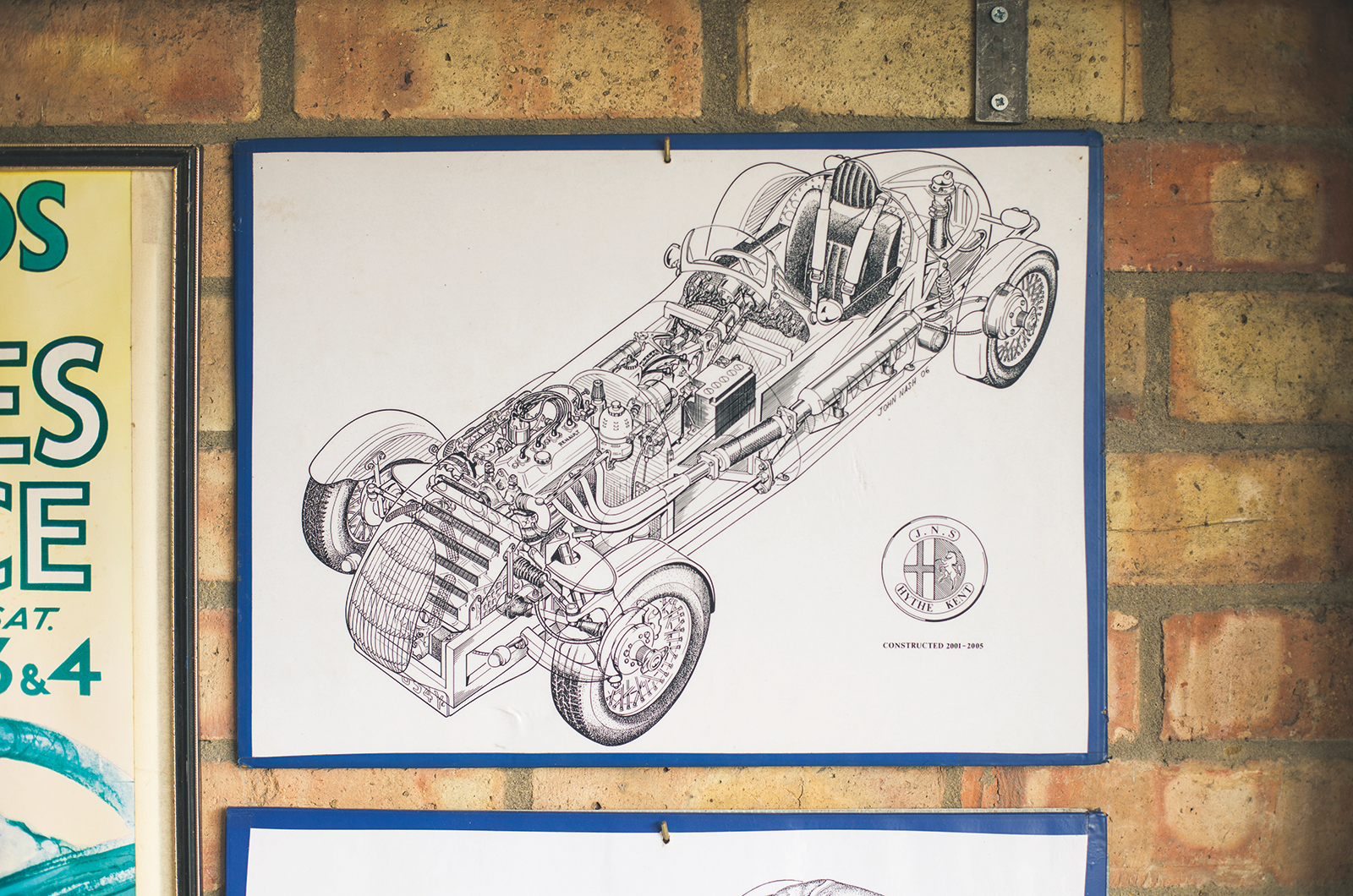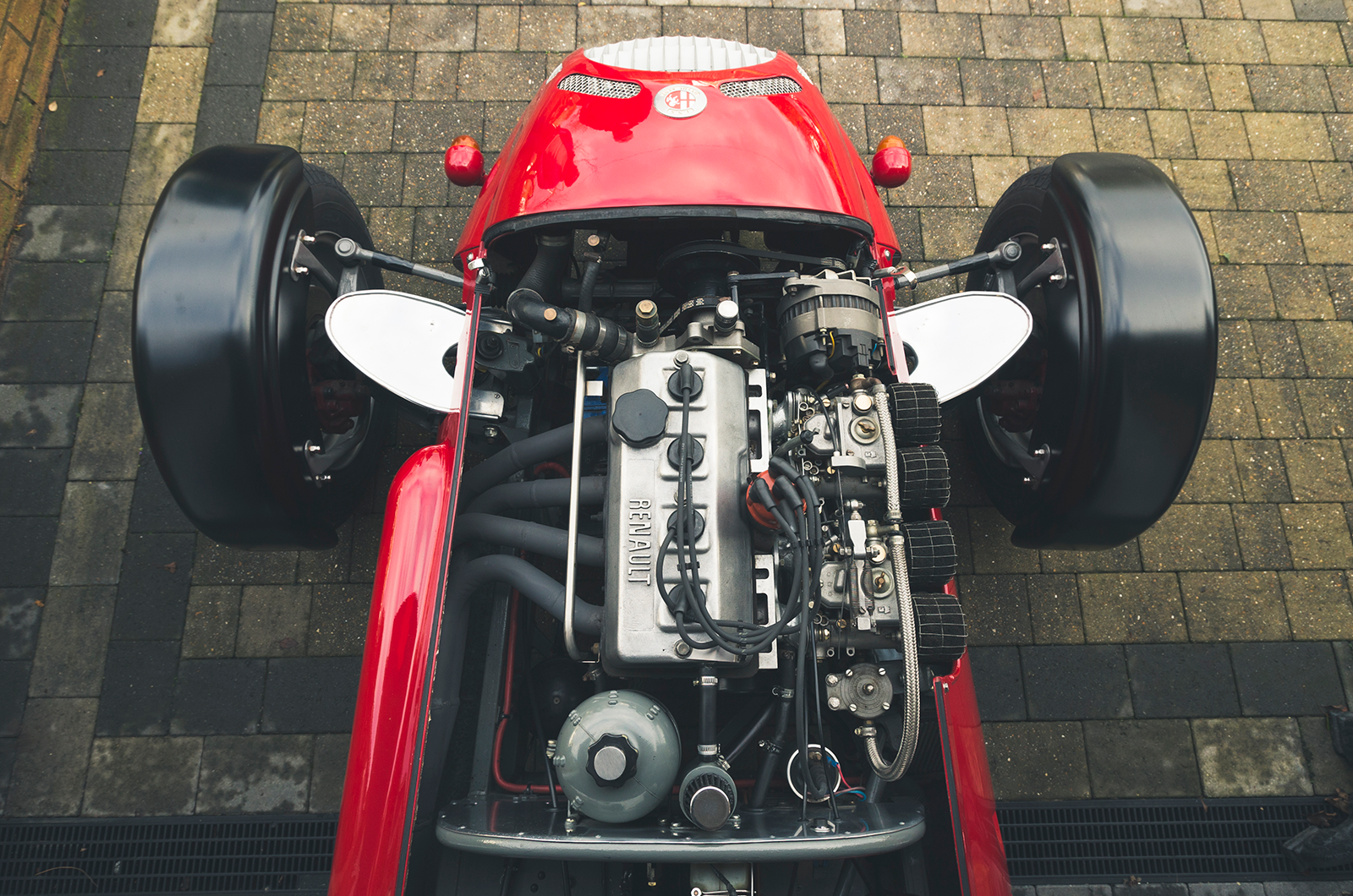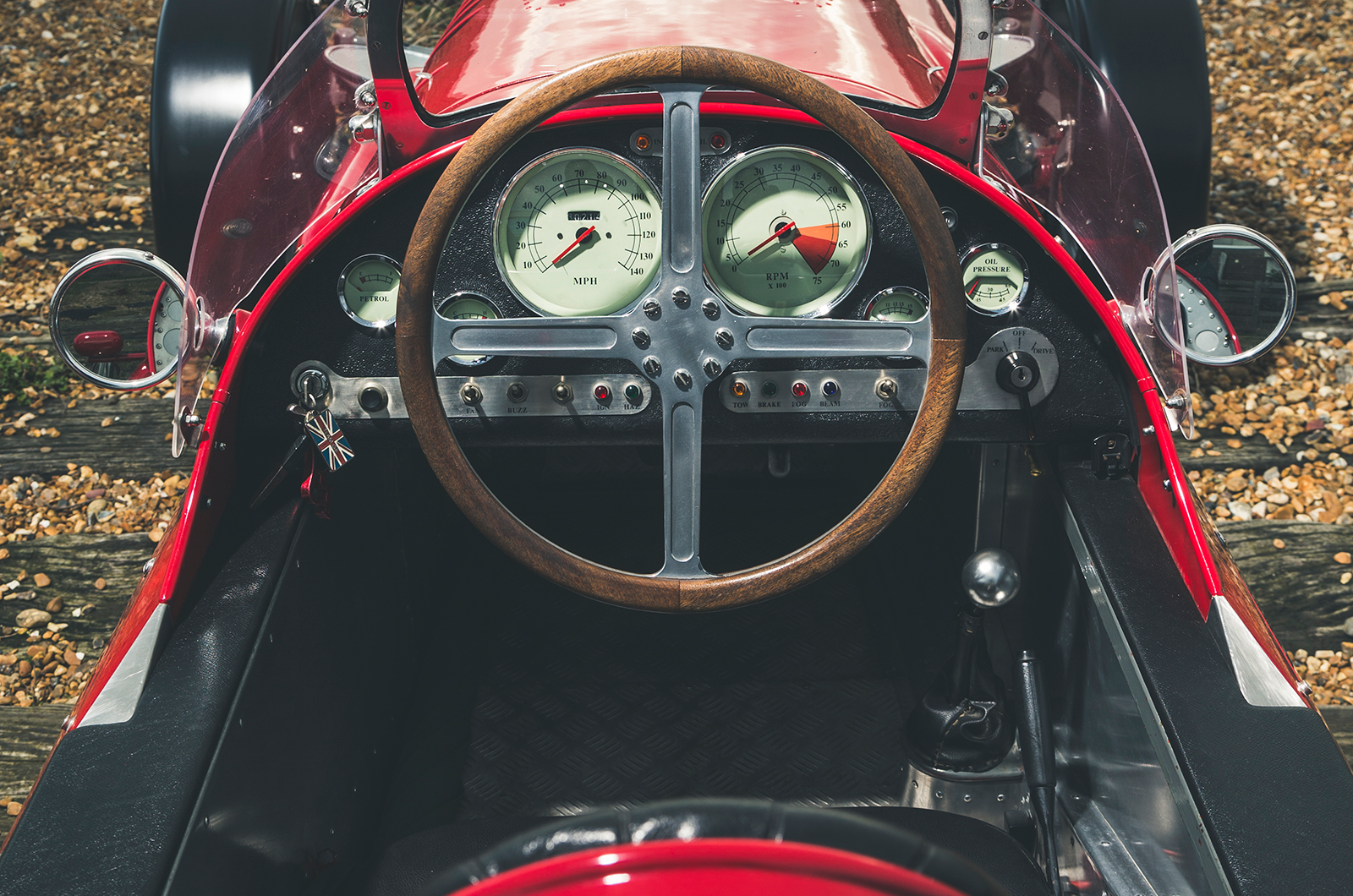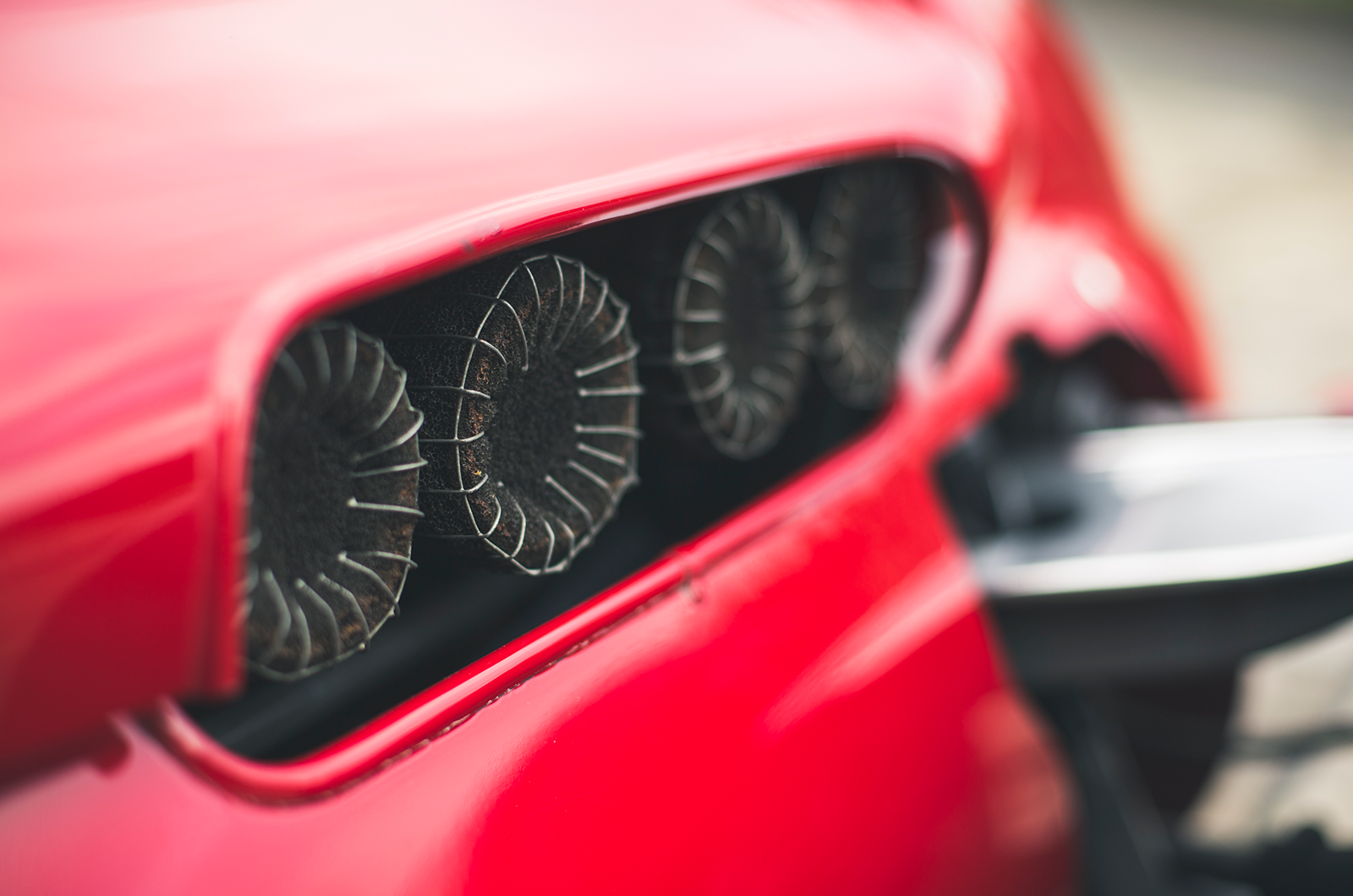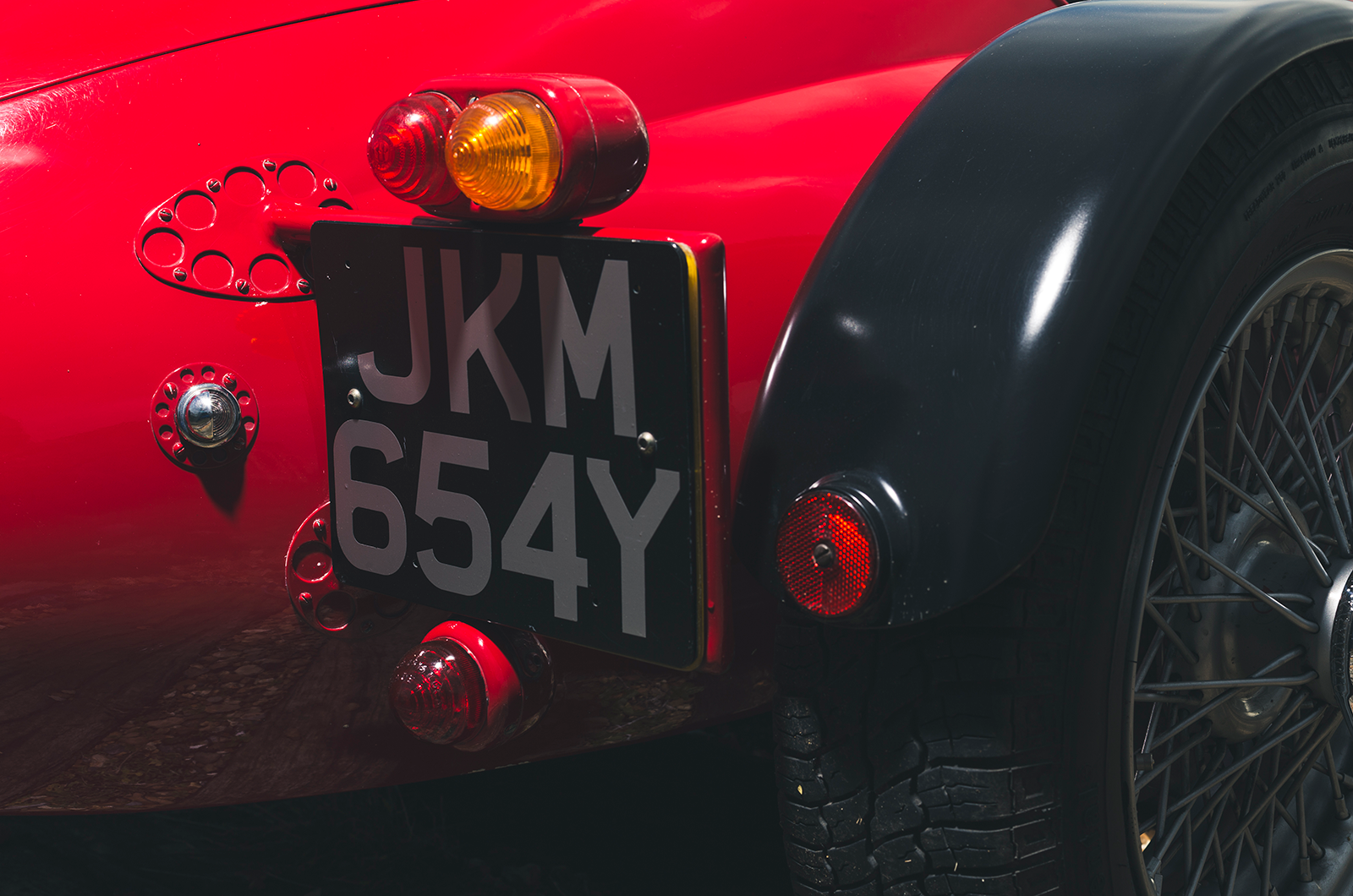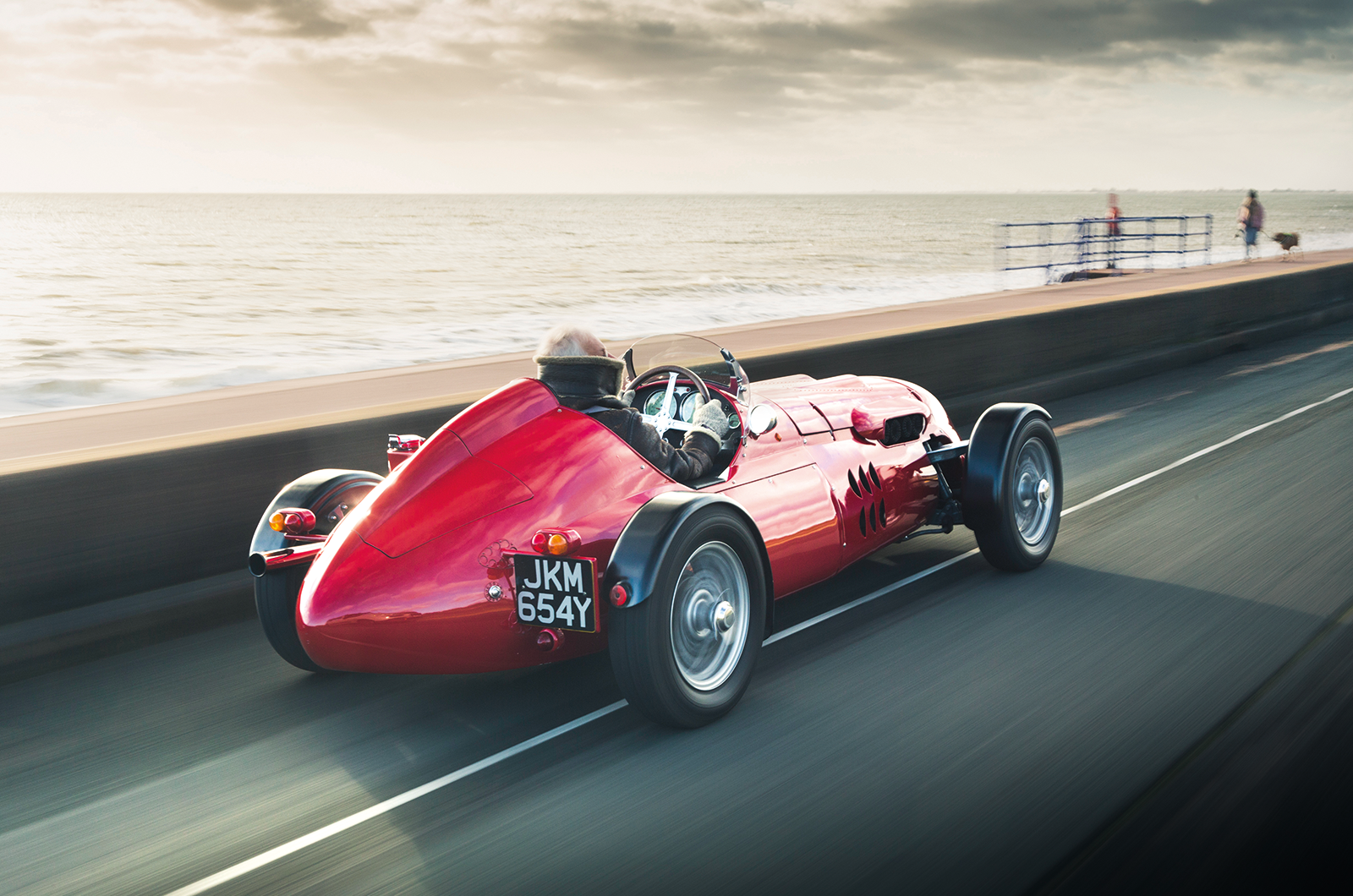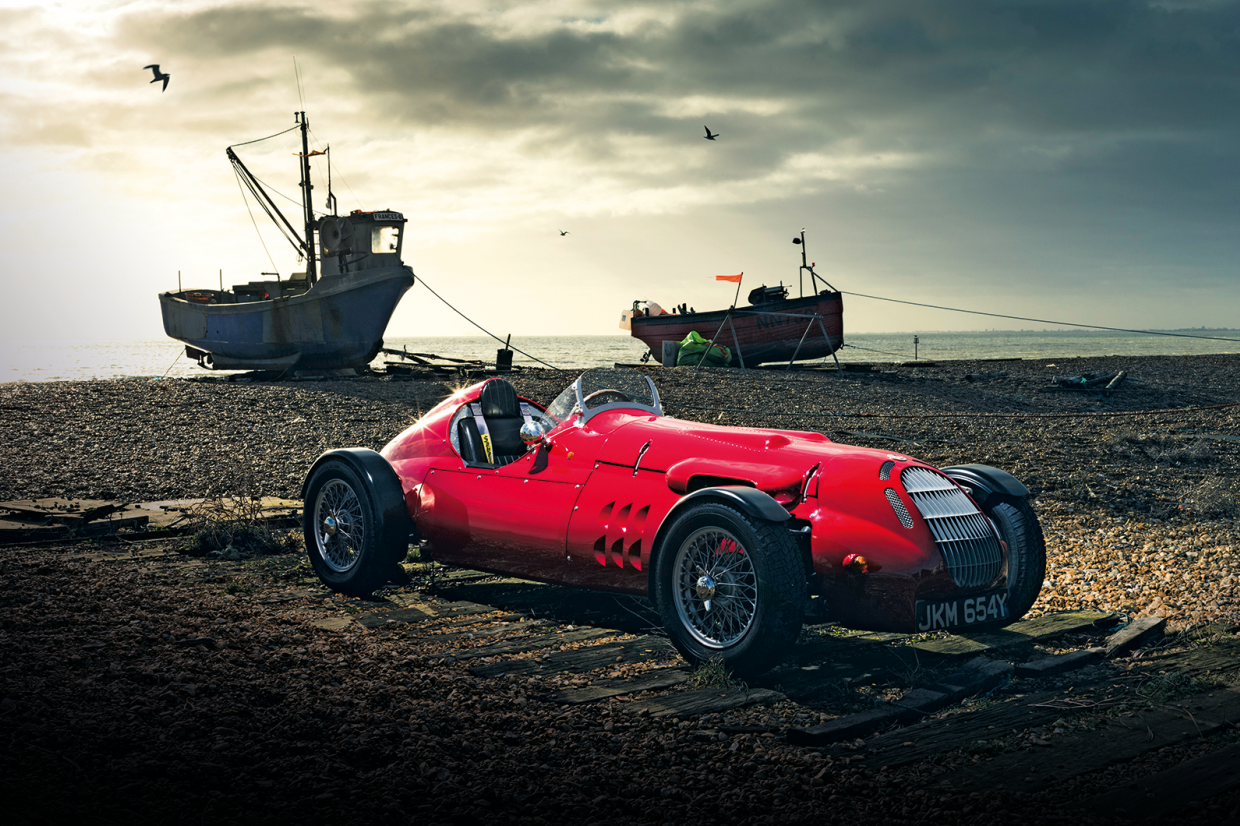
The view forwards is pure Fangio.
A single pane of laminated glass set in an aluminium frame, through which you can see a narrow bonnet and exposed wire wheels.
Your hands are on a wood-rimmed wheel with four aluminium spokes, with a stubby gearlever to the right of your leg.
White-faced instruments sit in an aluminium dash panel. It’s all very simple. Yet although this is a single-seater, there’s plenty of elbow room.
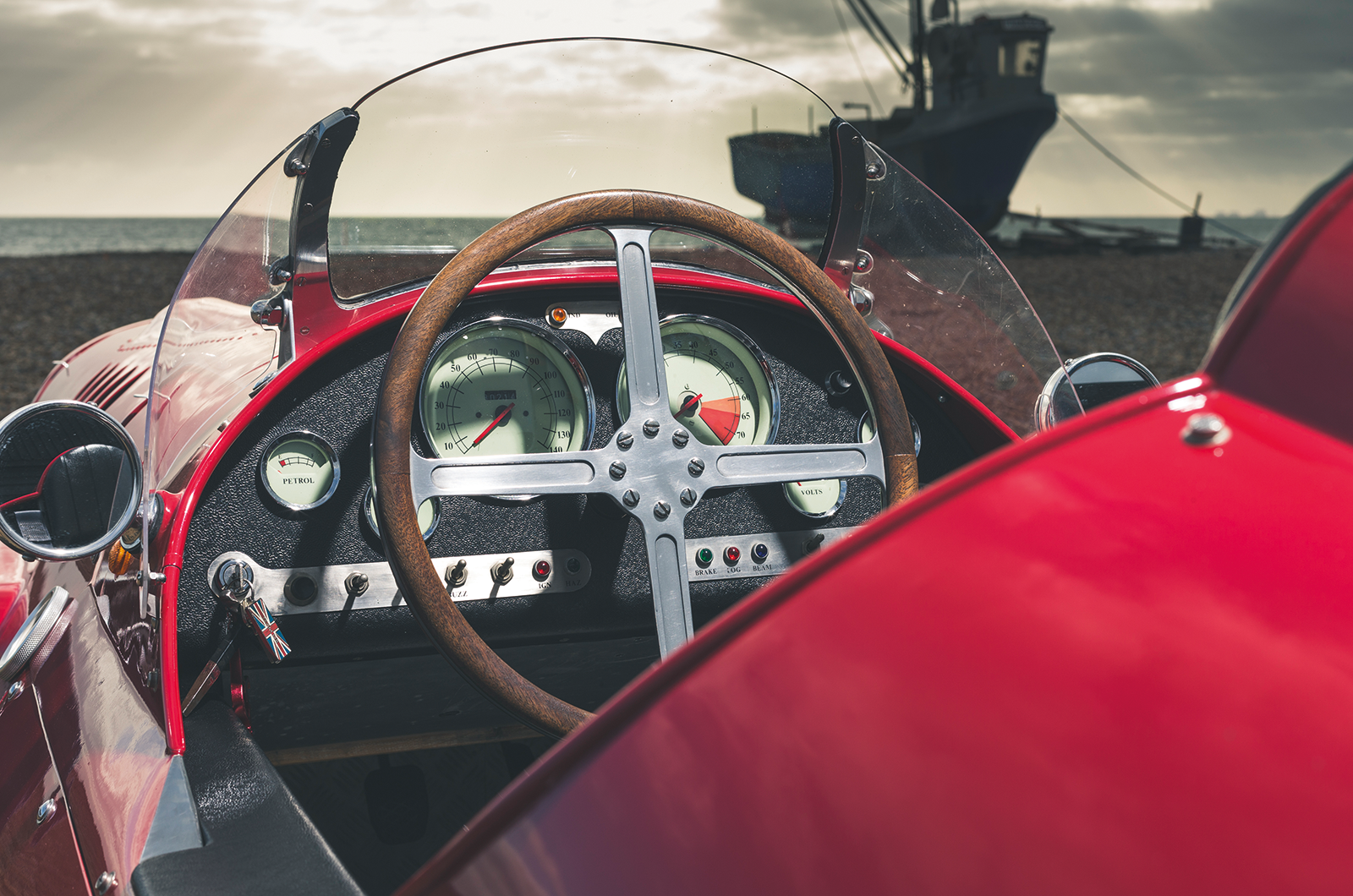
The dash belies this car’s budget beginnings
The pedals could be a bit closer, but unfortunately the seat isn’t adjustable because this unique machine has been set up for its owner, not a guest driver.
I first saw this car in summer 2019 during a Vintage Sports-Car Club meeting at Brands Hatch, where it was parked up as part of a line of kit cars outside the shops near the Kentagon pub.
From a distance, it looked as if it might have been a Grand Prix Alfa Romeo Tipo 159 Alfetta, because it had a very similar eggcrate grille.
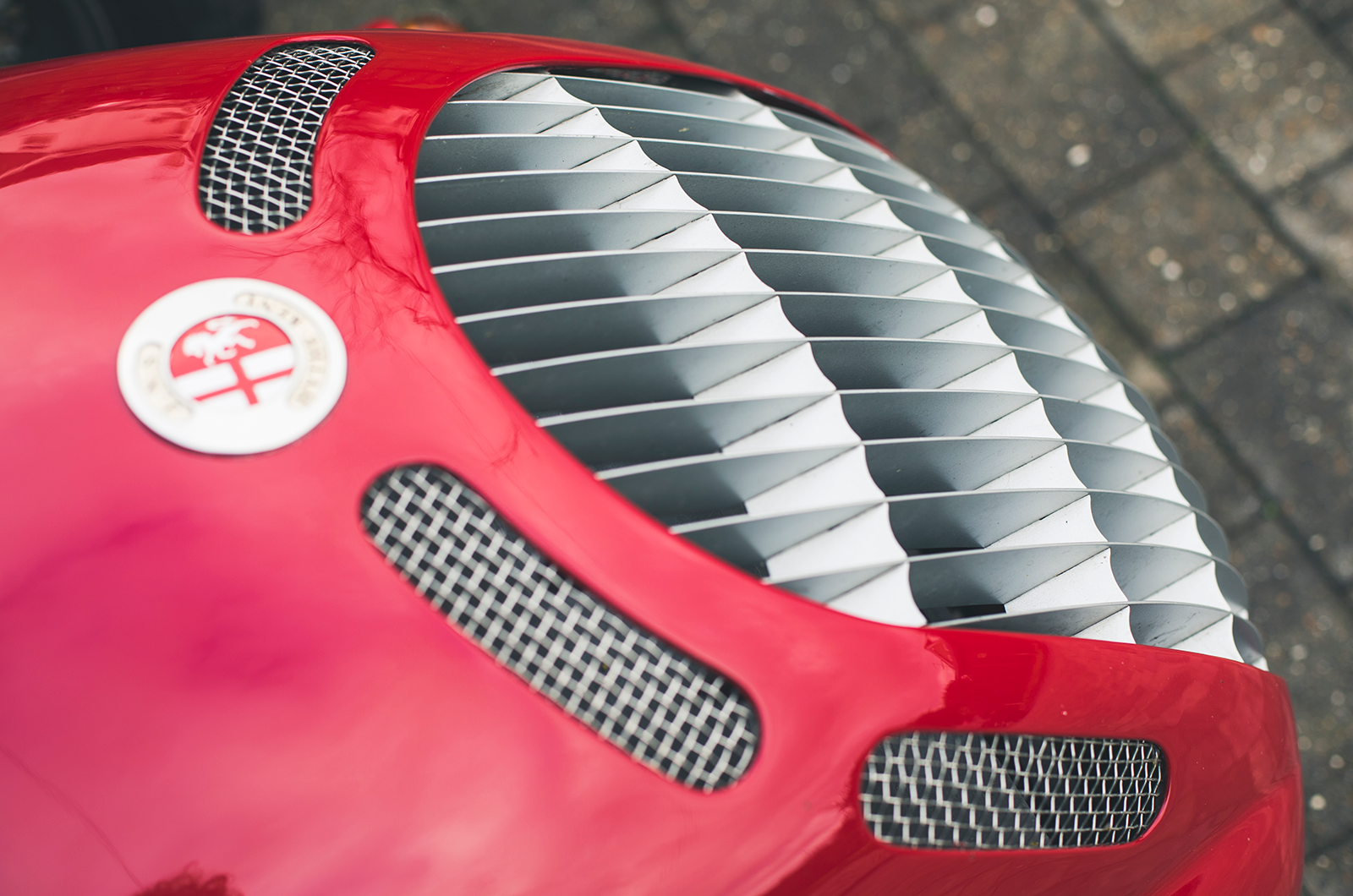
The eggcrate grille instantly brings to mind the earliest Formula One winners


